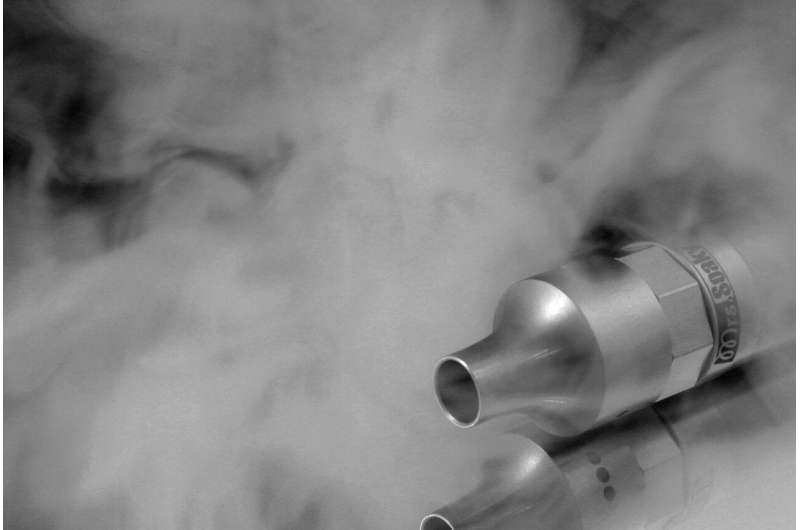Flavored e-cigarettes may affect the brain differently than non-flavored

Flavoring can change how the brain responds to e-cigarette aerosols that contain nicotine, according to Penn State College of Medicine researchers. Andrea Hobkirk and her team used functional magnetic resonance imaging (MRI) to understand how the brain’s reward areas react to e-cigarette aerosol with and without flavor.
“There are nearly 12 million e-cigarette users in the United States,” Hobkirk, an assistant professor of psychiatry and behavioral health at Penn State College of Medicine, said. “The vast majority use e-cigarettes with menthol, mint, fruity and dessert-type flavors. Although regulations that limit the sale of flavored e-cigarettes may help curb use among youth, they might also stop adults from using e-cigarettes as a smoking reduction or cessation aid. We are trying to understand how flavor influences e-cigarette reward and satisfaction for smokers and the risk of nicotine addiction for non-smokers.”
The team first developed a device to deliver e-cigarette aerosols during brain scanning. Next, the research team used this new device to deliver aerosols containing a low dose of nicotine to nine adult female smokers during a single laboratory visit. One aerosol had a strawberry-vanilla flavor, and the other aerosol was flavorless. The team compared the strength of brain activation and reward brain region involvement between flavored and unflavored aerosols.
“For our study, we were interested in looking first at, for smokers, how flavor might affect their response to nicotine e-cigarettes,” Hobkirk said. “We recruited smokers who had never used e-cigarettes before or were not regular e-cigarette users. What we were interested in is figuring out whether or not flavor changed how they perceived or how their brain responded to this e-cigarette use.”
The researchers found that the strawberry-vanilla aerosol engaged the brain’s taste region. In contrast, the unflavored aerosol engaged the brain’s reward region, similar to observations during cigarette smoking. The researchers published their results in the journal Experimental and Clinical Psychopharmacology.
The researchers also assessed patterns of neural activity between brain regions. Stronger connectivity between two brain regions typically means that these regions are working together. They found that key brain reward regions were strongly connected with flavored aerosol and not unflavored.
The findings suggest that for smokers, unflavored e-cigarettes may mimic the typical smoking experience more than flavored e-cigarettes.
“We found that for smokers who had never really used e-cigarettes before, the flavor did not make the experience more rewarding for them, at least in terms of what we saw in the brain,” Hobkirk said. “It did not make the experience of breathing in these aerosols more like a smoking experience. Typically, that’s what smokers are looking for when they’re trying to transition over to a healthier product. They want something that gives all the similar rewarding and sensory-motor effects of their regular combustible cigarette, but without all the harmful effects that come in the toxins of a cigarette. We found that adding flavor doesn’t necessarily do that for these smokers, at least what we saw in their response to them in the brain. This could suggest that, potentially, smokers do not necessarily need these flavors to make the transition from a combustible cigarette to an e-cigarette.”
Source: Read Full Article


